Slightly different take on things this time, and multiple meanings to the title. We open with an image from exactly ten years today, of a species that I was not familiar with at the time.
[I admit that I initially wrote this months ago, and then realized the dates would line up and shelved the post until now, because why not?]
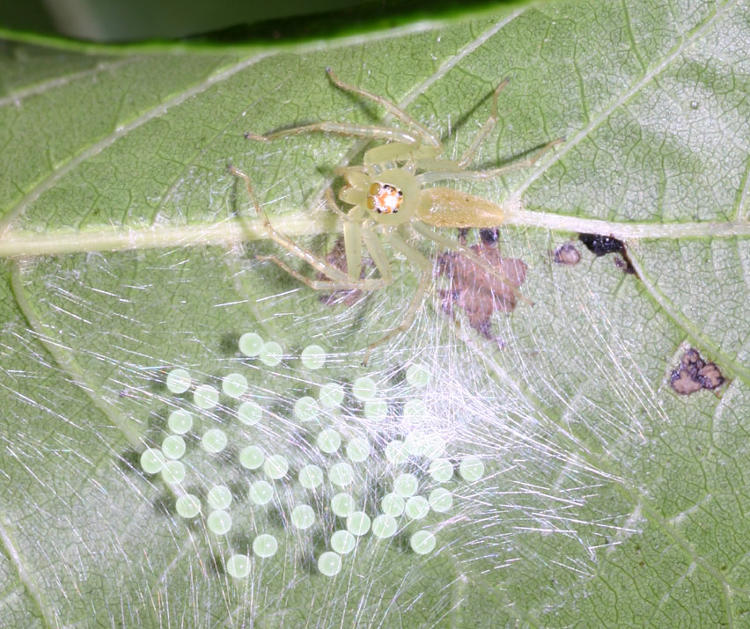
Finding this by chance on the underside of the leaf, back in July 2012, I was impressed with the almost-fluorescent nature of the eggs – they may, in fact, be faintly fluorescent in UV light, but I didn’t have the ability to check. This was a hint of some of the qualities of the magnolia green jumping spider (Lyssomanes viridis,) but not of the most distinctive trait. What I didn’t realize was, I’d already captured an indication of this trait two months earlier, but the connection wasn’t made yet.
In October of that same year, I found another, this time showing how their translucent body helped them hunt under leaves without being detected easily.
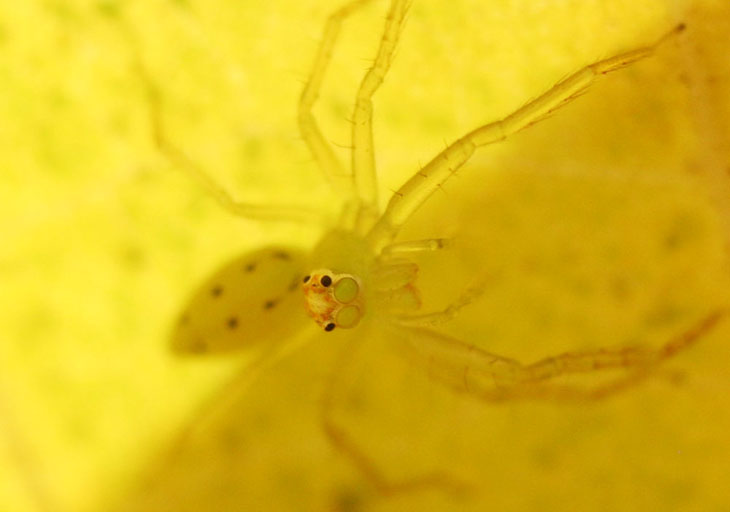
Their pale color blends in well with the paler leaf undersides, and their transparency helps disguise them further, especially the telltale nature of their legs. Here you can see the eyes are a faintly different hue, but nothing of the really cool detail that I happened upon the following year.
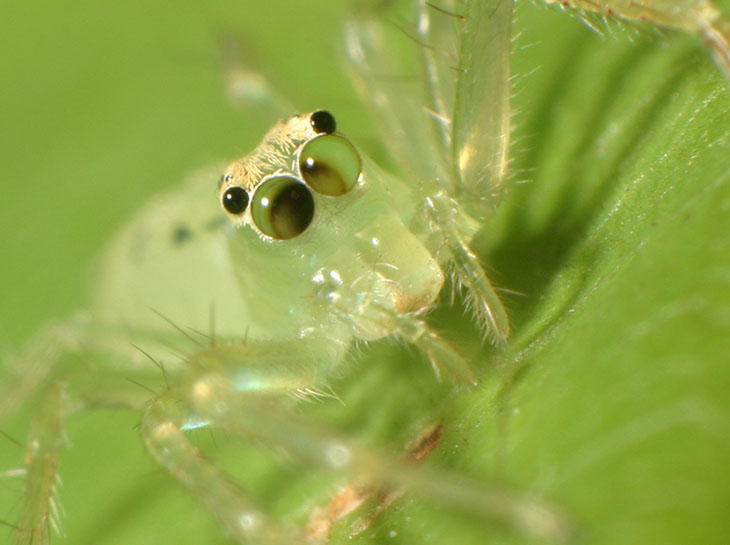
Most, if not all, jumping spiders have this trait, but since their corneas are fixed with the chitin, they move the interior of their eyes instead to focus and discern depth, and they can do this independently – it’s just that the light passing through the magnolia green allows us to see this. And it’s extremely weird to see the apparently floating dark discs of the retina wandering around within. Granted, you do have to be close to see this, since they top out under 10mm in body length.
But this started a quest to see more of these, perhaps even capture it on video, and as luck would have it, they seemed semi-common around the new place when we moved. I was even able to find a tiny little juvenile…
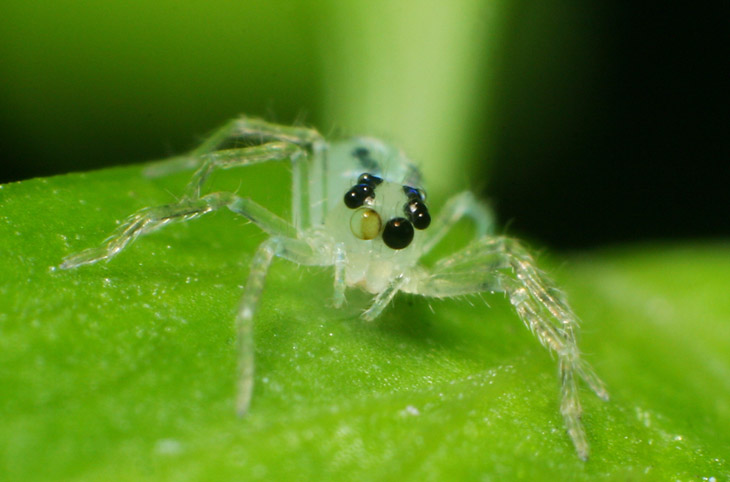
… as well as getting the same specimen onto the measuring scale long enough for a couple of frames…
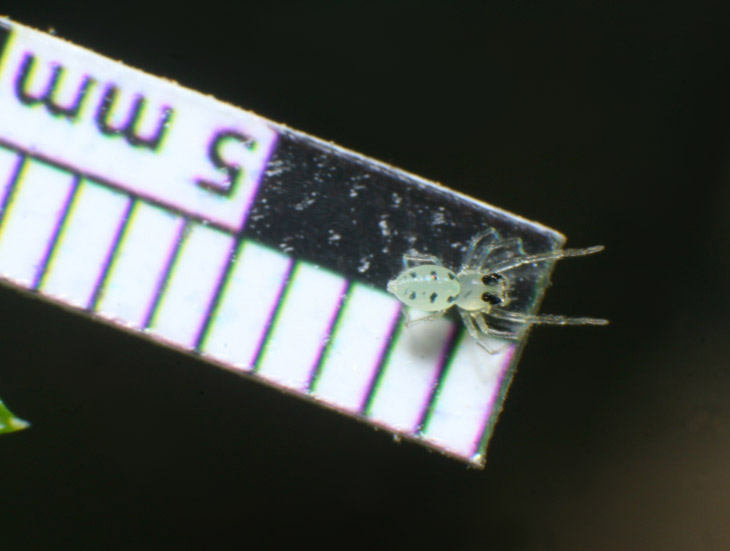
But the real accomplishment came due to two factors: housing a few adults in a small terrarium, and digging out an old digital USB ‘microscope’ since I did not yet have a camera body with video capabilities (despite the enormous income that this site engenders.) When one of my captives snagged herself a midge that I’d introduced, I had remarkable luck in getting her out of the terrarium, leaf-sprig and all, and onto my desk in front of the camera without any of umpteen things going wrong. This allowed for some nice closeups while she concentrated on her meal.
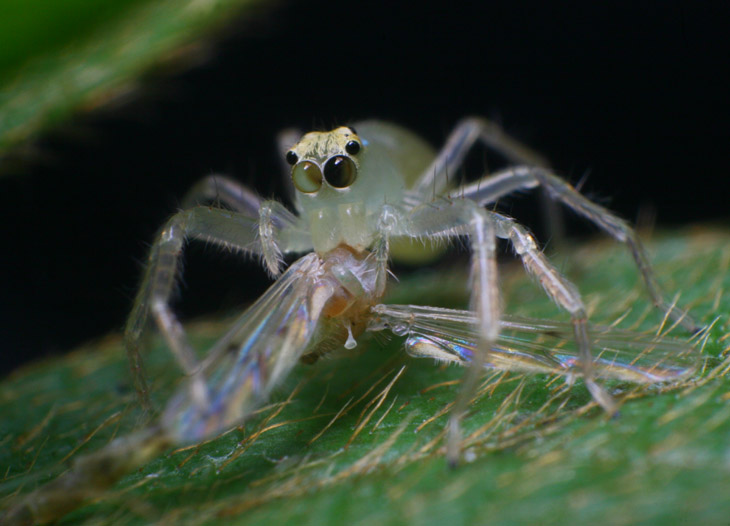
And she was even complacent enough for me to switch rigs.
I’m not sure I can express how lucky this was. Jumping spiders are next to fearless, but also a bit hyperactive, and within seconds will often wander off or leap away from whatever location they’re within, up to and including onto the camera itself. This necessitates capturing them and putting them back where the camera and lights are, whereupon they often seem to realize that they were already here and move even quicker to depart. Of course, being this small means that you can’t even grasp them with tweezers, but usually have to slide a small card underneath them and transport them that way, and they’re well aware that they’re not restricted in any manner – I’ve had some rodeos that would probably have been quite amusing to watch. Yet my video subject here not only remained in place while the leaf she was on flew through space, she even allowed herself to be turned around gently (this being accomplished with gentle nudges from a bit of pinestraw.)
Further accomplishments involved catching one in the final stage of molting…
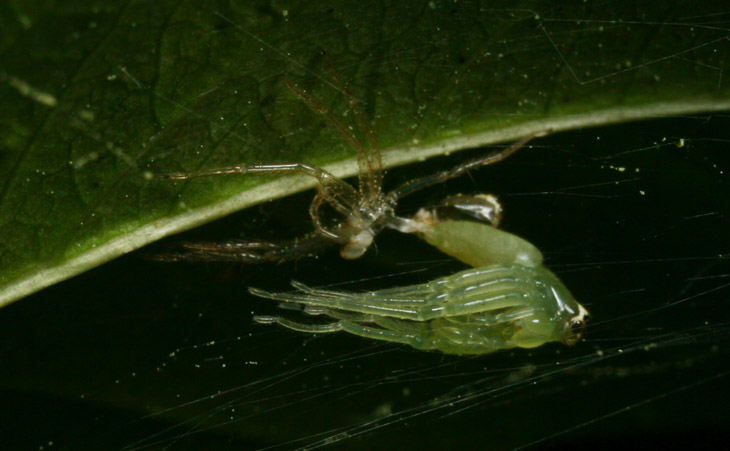
… and a nice closeup where one showed off her fangs (chelicerae):
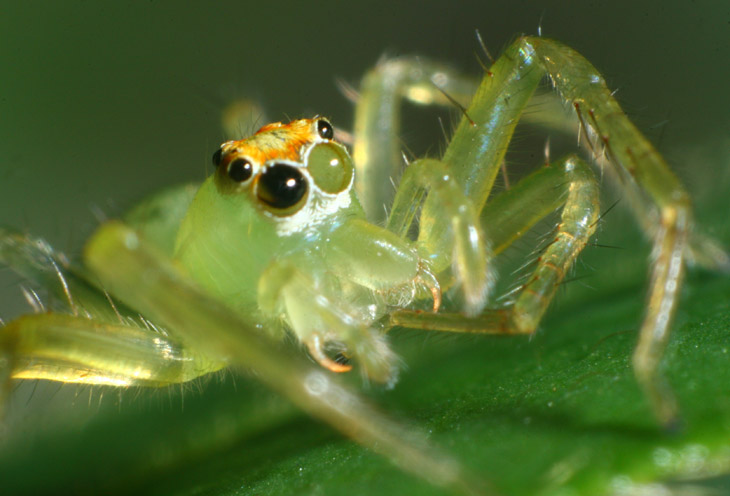
My goals, at this point, would be to get video of more complete behavior, which would require extensive stalking out in a prime location, or the construction of a more elaborate terrarium, one that would allow natural behavior and minimally restricted access for videography, a tall order. Not helped at all by the numbers of the magnolia greens being reduced the past couple of years – perhaps the neighborhood is getting a bad rap.




















































